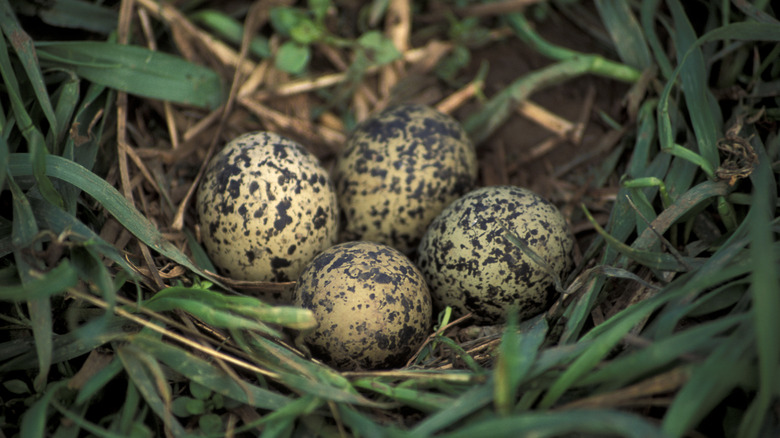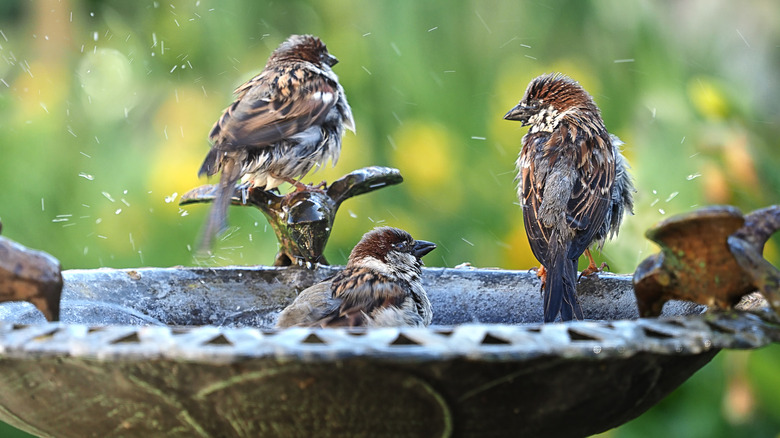How To Identify Common Backyard Bird Eggs (& One You Don't Want To See)
Depending on where you live, there are many types of beneficial birds you want in your yard. And with these birds come eggs. Finding these shelled beauts or even a nest in your backyard is a normal occurrence that shouldn't worry you. But for home maintenance and peace of mind, it's good to know how to identify common backyard bird eggs and the one you don't want to see — the house sparrow, which is a pest, believe it or not.
Identifying bird eggs, particularly common species, is pretty simple. Grab a notepad or your phone and head over to where you found the egg. From there, jot down as much detail as possible because there are thousands of species of birds and depending on your location, you can easily encounter a dozen or more of the most common in your yard. Instead of spending hours sifting through information about every egg, stick to the basics. To identify common backyard bird eggs, you need to understand what makes the egg distinctive, including its size, shape, and color.
The features to look out for while identifying backyard bird eggs
The best way to know which feathered friend the egg came from is to look at the egg's external features, including size, shape, texture, color, and markings. They range in sizes from chicken egg-sized to as small as a bean and come in different colors, like blue or pale gray. However, most backyard birds eggs won't look like a chicken's egg. Instead, determine if the egg is more oval or round, has a pointed end or not, and is narrow or wide. To figure out the texture, you need to feel the egg. Some eggs can feel pebbly and have dimples while others are smooth. Markings play a role in identification as well because not all eggs are solid colors, some have speckles, spots, and even splotches.
We could spend days going over all of the varieties, but the best place to find the type of egg you have is in a bird field guide. You can find field guides online or at your public library, or use websites like NestWatch, a bird monitoring site created by Cornell Lab of Ornithology, which will provide all the clarification you need.
The one bird egg you don't want to find in your backyard
From aggressive blue jays to property damaging European starlings, there are many birds you don't want to see in your yard. But the one bird egg you definitely don't want to see is a house sparrow. House sparrows are an invasive pest that come with a slew of issues, including property damage and aggression to other birds. Their eggs are less than an inch big and are white with either tinges of blue or green with gray or brown spots.
We have some great news though, since house sparrows are an exotic species, they are not protected by the Migratory Bird Treaty Act (MBTA), meaning you can remove their nests without a permit. If it seems the egg or next doesn't belong to a house sparrow, it's best to think twice before moving it. It's vital to understand how and when to move a bird nest from your yard. The MBTA prohibits most bird nests from removal, collection, or transfer. Unless you have a permit from the U.S. Fish and Wildlife Service, you must leave protected nests alone until they become inactive (have no young, eggs, or birds living in them).


